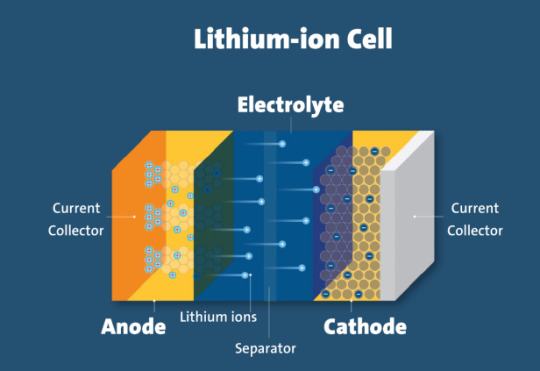#Grid Stability
Explore tagged Tumblr posts
Text
What does the recent blackout tell us about renewables? | World News - Times of India
What does the recent blackout tell us about renewables? (AP) At 12:33 p.m. on April 28, swathes of Spain and parts of Portugal were plunged into darkness: trains were stranded, phone and internet coverage faltered, and ATMs stopped working.The electricity blackout across the Iberian Peninsula is believed to be one of the worst in Europe’s history.While most power was restored by the next…
#.CloudServiceBaseResponse.data.Children.MetaInfoFields(id=17#grid stability#nuclear energy)#renewable energy#solar power#value=Spain blackout
0 notes
Text
U.S. Energy Storage Market: Growth Drivers, Challenges, and Future Outlook
The U.S. energy storage market is experiencing significant growth, driven by the increasing integration of renewable energy sources, advancements in storage technologies, and supportive government policies. In 2024, the market size was approximately 48.3 gigawatts (GW) and is projected to reach 120.3 GW by 2032, reflecting a compound annual growth rate (CAGR) of 12.2% from 2025 to 2032. Key…

View On WordPress
#battery technologies#Energy Storage Market#grid stability#lithium-ion batteries#renewable energy integration#solid-state batteries#U.S. energy storage
0 notes
Text
How Hybrid Energy Systems Keep the Power Grid Stable and Reliable

Renewable energy is becoming more popular as businesses and governments look for cleaner alternatives to fossil fuels. One of the best ways to ensure a steady energy supply is by using hybrid (solar+wind) energy. It combines solar power and wind power, balancing out their strengths and weaknesses. These hybrid renewable energy systems help make the power grid more stable and reliable.
As energy demands rise, traditional grids struggle with balancing supply and demand. Power outages, voltage fluctuations, and high transmission losses make it harder to ensure reliable energy. This is where hybrid renewable energy systems step in, offering a smarter and more sustainable way to meet growing energy needs.
What Are Hybrid Energy Systems?
A hybrid energy system mixes two or more renewable energy sources, usually solar power and wind power, to generate electricity. Since solar works best during the day and wind can produce power anytime, combining them makes energy production more consistent.
For example, when the sun isn't shining, the wind might still be blowing, keeping the energy flowing. That way, hybrid renewable energy systems reduce dependence on just one source and keep power supply steady. Many systems also include battery storage, ensuring that excess energy gets stored for use when needed.
Hybrid energy systems can be set up in different ways. Some operate independently in remote areas where traditional grids don’t reach. Others work alongside the main grid, reducing the pressure on centralized power stations. Either way, these systems help keep the electricity flowing smoothly.
How Hybrid Energy Helps Keep the Grid Stable
The power grid needs a balance between supply and demand to work properly. Hybrid (solar+wind) energy helps in several ways:
1. Smoother Power Supply
If clouds reduce solar power, wind power can pick up the slack. This makes energy output more stable compared to standalone solar or wind plants.
2. Better Energy Storage
Many hybrid energy systems use battery storage to save extra power for when it’s needed most, keeping the grid running smoothly. Stored energy can be used during peak demand times, reducing stress on the grid.
3. Less Pressure on the Grid
When renewable energy is generated locally, there’s less strain on the main grid. This reduces energy losses that happen during transmission and makes power delivery more efficient.
4. More Decentralized Power
Hybrid energy systems support distributed energy production, meaning electricity isn’t all coming from one place. This is especially helpful in remote areas with weak grid infrastructure. When each region produces its own power, it reduces the need for long-distance transmission.
5. Fewer Voltage and Frequency Problems
A traditional power grid can struggle with fluctuations in supply and demand. Hybrid renewable energy systems help smooth these out, keeping the grid stable and preventing power disruptions.
Why Hybrid Renewable Energy Systems Are Reliable
Having a dependable power supply is crucial, and solar and wind energy makes it more reliable in several ways:
Multiple Energy Sources: Using both solar power and wind power lowers the risk of energy shortages. If one source slows down, the other can make up for it.
More Energy Security: Relying too much on fossil fuels can cause energy shortages. Hybrid renewable energy systems spread out power generation and reduce dependency on non-renewable sources.
Fewer Blackouts: Wind & Hybrid Power Plants act as a backup, reducing the risk of sudden power failures. Even in extreme weather conditions, at least one energy source is likely to keep working.
Stronger Grid Resilience: Hybrid systems handle extreme weather better than standalone solar or wind power plants. Wind speeds tend to pick up when storms roll in, keeping turbines active even when solar panels are covered by clouds.
Smart Grid Integration: These systems work well with smart grids, which improve power distribution through advanced monitoring and control. Smart grids help direct power where it's needed most, reducing waste and improving efficiency.
Challenges and How to Solve Them
Despite their benefits, hybrid (solar+wind) energy systems do have some challenges:
Inconsistent Power Generation: Since both solar power and wind power depend on weather, energy output can vary. Battery storage and smart grid technology help balance things out.
High Upfront Costs: Setting up hybrid renewable energy systems isn’t cheap. But with better technology and financial support from governments, costs are going down. Many companies offer incentives and tax benefits to encourage investment in renewable energy.
Complex Grid Integration: Hybrid systems need advanced grid infrastructure to work efficiently. Modern energy management systems are helping make this process smoother. Automation, AI, and smart meters are making it easier to blend renewable energy with existing power grids.
More Industries Are Switching to Hybrid Energy
Governments and businesses worldwide are seeing the benefits of hybrid (solar+wind) energy. Companies like KP Group are leading the charge in developing solar and wind energy plants, helping move towards a cleaner, more stable energy future.
Industries with high energy demands, such as manufacturing and data centers, are especially benefiting from hybrid energy solutions. These businesses require uninterrupted power to avoid downtime and maintain productivity. Hybrid systems help reduce their dependence on expensive fossil fuels and cut operational costs.
Are you interested in earning from solar energy or wind energy without technical hassles? Check out how you can invest in renewable energy.
Even small businesses and residential communities are adopting hybrid renewable energy systems. With solar panels becoming more affordable and wind turbines being designed for smaller-scale use, more people are choosing to generate their own power. This shift is reducing stress on national grids and promoting energy independence.
What’s Next for Hybrid Energy?
As technology improves, hybrid renewable energy systems will become even smarter. Smart grids will:
Adjust energy distribution based on real-time demand.
Cut down dependence on fossil fuels.
Boost energy efficiency and sustainability.
Allow two-way communication between energy producers and users.
Provide better real-time monitoring and maintenance.
With AI-driven energy forecasting, grid operators will be able to predict power supply variations and adjust accordingly. This will make hybrid energy even more reliable and cost-effective.
Conclusion
Adding hybrid (solar+wind) energy to power grids is changing the game, making electricity supply more stable and reliable. By using both solar power and wind power, these systems create a cleaner and more cost-effective energy solution. Companies like KP Energy are leading this transformation. If you're interested in dependable hybrid renewable energy solutions, contact us to learn more.
The future of energy is hybrid, and the benefits are clear. More reliable power, lower costs, and a sustainable approach to meeting global energy needs. As more companies and individuals make the switch, the power grid will only get stronger, paving the way for a greener, more stable future.
#hybrid energy systems#solar power#wind power#renewable energy#grid stability#energy reliability#hybrid renewable energy#green energy#hybrid power plants
0 notes
Text
"During the tests, electricity generators were switched on and off, and the impact of these actions on the system frequency was monitored. Also, during the test, the Combined cycle unit of the Elektrėnai complex in Lithuania temporarily disconnected and reconnected later.
P.S. Russian propaganda suffers humiliating defeat in the Baltic States today: the Baltic States successfully disconnected electric grid from Russians...
1 note
·
View note
Text
Flowing Forward: Nepal's Hydroelectric Future Enhanced by Innovative Energy Storage
Australia’s Hornsdale Power Reserve, a powerhouse in energy storage, boasts one of the country’s largest units, capable of reserving up to 150 MW in its advanced lithium-ion batteries. On the other side of the globe, the Bath County Pumped Storage Station in Virginia, USA, stands as a venerable giant in pumped hydro storage, operating since 1985. This monumental project strategically utilizes two…

View On WordPress
#ADELE#Australia&039;s Hornsdale Power Reserve#Battery Energy Storage Systems (BESS)#Compressed Air Energy Storage (CAES)#energy storage#Energy Storage System (ESS)#Grid Stability#lithium-ion batteries#Nepal&039;s Hydroelectric Challenge#Pumped Hydro Storage#Renewable Energy Integration
0 notes
Text
Tesla Expands Virtual Power Plant to 244 San Diego Homes
Tesla’s Virtual Power Plant (VPP) program in San Diego is zooming towards significant milestones, as it inches closer to enrolling 250 homes. Launched with the aim to make renewable energy more accessible and grid power more sustainable, the program is gaining rapid traction. Homeowners equipped with Tesla Powerwalls and solar panels are getting an opportunity to serve the greater good, all while…

View On WordPress
0 notes
Text
Advance Energy Storage Market Research Report Includes Dynamics Demands, Products, Types and Application 2017 – 2032

Overview of the Market:
providing efficient and reliable storage solutions for electricity generated from renewable and conventional sources. These storage systems enable the balancing of supply and demand, integration of intermittent renewable energy, grid stabilization, and optimization of energy usage. The global advanced energy storage systems market is expected to grow at a CAGR of 9% from 2023 to 2032.
Promising Growth and Demand: The advanced energy storage market has experienced significant growth in recent years, driven by several factors. Increasing renewable energy deployment, declining costs of storage technologies, and supportive government policies promoting clean energy and grid modernization have spurred the demand for advanced energy storage solutions. Additionally, the need for energy resilience, demand management, and peak shaving in industries, commercial buildings, and residential applications has further contributed to market growth.
Platform Type: The advanced energy storage market encompasses various platform types for energy storage:
Battery Energy Storage Systems (BESS): Battery-based energy storage systems are one of the most widely used platforms. They employ rechargeable batteries, such as lithium-ion, lead-acid, or flow batteries, to store and discharge electricity as needed.
Pumped Hydro Storage: Pumped hydro storage utilizes the gravitational potential energy of water by pumping it to a higher elevation during times of excess electricity and releasing it through turbines to generate electricity during peak demand periods.
Thermal Energy Storage: Thermal energy storage systems store and release thermal energy using materials such as molten salts or phase change materials. This technology is often utilized for heating, cooling, and industrial processes.
Flywheel Energy Storage: Flywheel systems store rotational energy in a spinning flywheel, which can be converted back into electricity when needed. They provide high-speed, short-duration energy storage.
Technology: Advanced energy storage systems employ various technologies to store and deliver electricity efficiently:
Lithium-ion Batteries: Lithium-ion batteries are the most common technology used in battery energy storage systems. They offer high energy density, long cycle life, and rapid response times.
Flow Batteries: Flow batteries use electrolyte solutions stored in external tanks to store and release energy. They offer scalability and long cycle life, making them suitable for large-scale applications.
Compressed Air Energy Storage (CAES): CAES systems compress air and store it in underground caverns or tanks. The stored air is then expanded through turbines to generate electricity during peak demand.
Thermal Storage Technologies: Thermal energy storage systems utilize materials with high specific heat capacity or phase change materials to store thermal energy for later use in heating or cooling applications.
End User Industry: The advanced energy storage market serves various end user industries, including:
Utilities and Grid Operators: Utilities and grid operators utilize advanced energy storage systems to optimize grid stability, manage peak demand, integrate renewable energy, and enhance grid resilience.
Commercial and Industrial Sectors: Commercial and industrial facilities deploy energy storage solutions to manage electricity costs, reduce peak demand charges, provide backup power, and optimize on-site renewable energy generation.
Residential Sector: Residential applications of advanced energy storage include residential solar systems with battery storage for self-consumption, backup power during outages, and demand management.
Scope:
The advanced energy storage market has a global scope, with increasing deployment in various regions. The market encompasses equipment manufacturers, system integrators, energy storage developers, and utilities. Market statistics, growth projections, and demand may vary across regions due to factors such as energy policies, market maturity, and renewable energy penetration.
The market's scope extends to various aspects, including technology advancements, cost reduction, grid integration, and energy management solutions. With the increasing need for clean energy, grid stability, and energy efficiency, the demand for advanced energy storage solutions is expected to grow, presenting opportunities for industry players.
In conclusion, the advanced energy storage market is experiencing promising growth globally. The adoption of advanced energy storage systems is driven by factors such as renewable energy integration, grid modernization, and the need for energy management and resilience. The market serves utilities, commercial, industrial, and residential sectors, utilizing technologies such as batteries, pumped hydro, thermal storage, and flywheels. As the world transitions towards a more sustainable energy future, the demand for advanced energy storage solutions is expected to increase, providing significant opportunities for industry participants in the global energy sector.
We recommend referring our Stringent datalytics firm, industry publications, and websites that specialize in providing market reports. These sources often offer comprehensive analysis, market trends, growth forecasts, competitive landscape, and other valuable insights into this market.
By visiting our website or contacting us directly, you can explore the availability of specific reports related to this market. These reports often require a purchase or subscription, but we provide comprehensive and in-depth information that can be valuable for businesses, investors, and individuals interested in this market.
“Remember to look for recent reports to ensure you have the most current and relevant information.”
Click Here, To Get Free Sample Report: https://stringentdatalytics.com/sample-request/solar-panel-recycling-management-market/11372/
Market Segmentations:
Global Solar Panel Recycling Management Market: By Company • First Solar • Envaris • REMA PV Systems • Darfon Electronics • Rinovasol • Chaoqiang Silicon Material • Suzhou Shangyunda Electronics • PV Recycling • Silcontel • Cellnex Energy • IG Solar Private Global Solar Panel Recycling Management Market: By Type • Monocrystalline cells • Polycrystalline cells Global Solar Panel Recycling Management Market: By Application • Industrial • Commercial • Utility • Others Global Solar Panel Recycling Management Market: Regional Analysis The regional analysis of the global Solar Panel Recycling Management market provides insights into the market's performance across different regions of the world. The analysis is based on recent and future trends and includes market forecast for the prediction period. The countries covered in the regional analysis of the Solar Panel Recycling Management market report are as follows: North America: The North America region includes the U.S., Canada, and Mexico. The U.S. is the largest market for Solar Panel Recycling Management in this region, followed by Canada and Mexico. The market growth in this region is primarily driven by the presence of key market players and the increasing demand for the product. Europe: The Europe region includes Germany, France, U.K., Russia, Italy, Spain, Turkey, Netherlands, Switzerland, Belgium, and Rest of Europe. Germany is the largest market for Solar Panel Recycling Management in this region, followed by the U.K. and France. The market growth in this region is driven by the increasing demand for the product in the automotive and aerospace sectors. Asia-Pacific: The Asia-Pacific region includes Singapore, Malaysia, Australia, Thailand, Indonesia, Philippines, China, Japan, India, South Korea, and Rest of Asia-Pacific. China is the largest market for Solar Panel Recycling Management in this region, followed by Japan and India. The market growth in this region is driven by the increasing adoption of the product in various end-use industries, such as automotive, aerospace, and construction. Middle East and Africa: The Middle East and Africa region includes Saudi Arabia, U.A.E, South Africa, Egypt, Israel, and Rest of Middle East and Africa. The market growth in this region is driven by the increasing demand for the product in the aerospace and defense sectors. South America: The South America region includes Argentina, Brazil, and Rest of South America. Brazil is the largest market for Solar Panel Recycling Management in this region, followed by Argentina. The market growth in this region is primarily driven by the increasing demand for the product in the automotive sector.
Visit Report Page for More Details: https://stringentdatalytics.com/reports/solar-panel-recycling-management-market/11372/
Reasons to Purchase Solar Panel Recycling Management Market Report:
Informed Decision-Making: A comprehensive market research report provides valuable insights and analysis of the district heating market, including market size, growth trends, competitive landscape, and key drivers and challenges. This information allows businesses to make informed decisions regarding investments, expansion strategies, and product development.
Market Understanding: Research reports offer a deep understanding of the district heating market, including its current state and future prospects. They provide an overview of market dynamics, such as industry trends, regulatory frameworks, and technological advancements, helping businesses identify opportunities and potential risks.
Competitive Analysis: Market research reports often include a competitive analysis, profiling key players in the district heating market. This analysis helps businesses understand their competitors' strategies, market share, and product offerings. It enables companies to benchmark themselves against industry leaders and identify areas for improvement or differentiation.
Market Entry and Expansion: For companies planning to enter the district heating market or expand their existing operations, a market research report provides crucial information about market saturation, customer preferences, and regional dynamics. It helps businesses identify viable market segments, target demographics, and potential growth areas.
Investment Opportunities: Market research reports highlight investment opportunities in the district heating market, such as emerging technologies, untapped regions, or niche markets. This information can assist investors in making informed decisions about capital allocation and portfolio diversification.
Risk Mitigation: By analyzing market trends, customer preferences, and regulatory frameworks, market research reports help businesses identify and mitigate potential risks and challenges. This proactive approach can minimize uncertainties and optimize decision-making processes.
Cost Savings: Investing in a market research report can potentially save businesses time and resources. Rather than conducting extensive primary research or relying on fragmented information sources, a comprehensive report consolidates relevant data, analysis, and insights in one place, making it a cost-effective solution.
Industry Benchmarking: Market research reports provide benchmarks and performance indicators that allow businesses to compare their performance with industry standards. This evaluation helps companies identify areas where they excel or lag behind, facilitating strategic improvements and enhancing their competitive position.
Long-Term Planning: A global market research report offers a forward-looking perspective on the district heating market, including growth projections, emerging trends, and future opportunities. This insight aids businesses in long-term planning, resource allocation, and adapting their strategies to changing market dynamics.
Credibility and Authority: Market research reports are typically prepared by industry experts, analysts, and research firms with in-depth knowledge of the subject matter. Purchasing a reputable report ensures access to reliable and credible information, enhancing decision-making processes and providing confidence to stakeholders.
In general, market research studies offer companies and organisations useful data that can aid in making decisions and maintaining competitiveness in their industry. They can offer a strong basis for decision-making, strategy formulation, and company planning.
About US:
Stringent Datalytics offers both custom and syndicated market research reports. Custom market research reports are tailored to a specific client's needs and requirements. These reports provide unique insights into a particular industry or market segment and can help businesses make informed decisions about their strategies and operations.
Syndicated market research reports, on the other hand, are pre-existing reports that are available for purchase by multiple clients. These reports are often produced on a regular basis, such as annually or quarterly, and cover a broad range of industries and market segments. Syndicated reports provide clients with insights into industry trends, market sizes, and competitive landscapes. By offering both custom and syndicated reports, Stringent Datalytics can provide clients with a range of market research solutions that can be customized to their specific needs
Contact US:
Stringent Datalytics
Contact No - +1 346 666 6655
Email Id - [email protected]
Web - https://stringentdatalytics.com/
#Advance Energy Storage Market#Renewable Energy#Battery Technology#Grid Integration#Energy Storage Systems#Lithium-ion Batteries#Energy Management#Sustainable Power#Energy Transition#Smart Grid#Electric Vehicles#Power Electronics#Distributed Energy Resources#Energy Efficiency#Carbon Emissions#Grid Stability#Solar Energy#Wind Energy#Energy Policy#Energy Storage Capacity#Energy Infrastructure#Energy Market Trends#Energy Storage Solutions#Microgrids#Demand Response#Energy Storage Technologies#Energy Storage Applications#Energy Storage Investment#Energy Storage Economics#Energy Storage Challenges
0 notes
Text

Lewis Hamilton as The Emperor:
The Emperor tarot card symbolizes the ultimate male ego and absolute ruler of the world, with a sign of sterility of regulation and unyielding power. This card is often associated with a strong sense of authority, control, and structure. It can also represent a need for order and stability in one's life. It is your hard work, discipline and self control that have bought you this far.
While the Empress represents the archetypal mother, the Emperor represents the father. He exudes authority - and though he is stern, he is also filled with wisdom and understanding from his years. He signals structure, stability and the rule of thought over the heart.


Tag list: @st-leclerc @rubywingsracing @saviour-of-lord @three-days-time @the-wall-is-my-goal @albonoooo @ch3rubd0lls
#another day another tarot redo lol#lots of hashtag symbolism in this one#7 stars for the wdcs#Orange background for passion stability and warmth#in the og drawing I had his throne as a car#but I’m TIRED of trying to font references of these ppl sitting or kneeling in over it#we’re standing from now on#this card is v Lewis#obviously the undisputed goat complete authority 7 wdc total dominance#I also just think that Lewis is v disciplined? which is a huge aspect of this card#and the fatherly thing is shown in his mentorship of… several members of the grid#shoutout to Franco and George#also him holding the world lol that f1 graphic was too good not to reference#f1#formula 1#f1blr#f1 fanart#formula one#f1 art#annie’s art#formula one fanart#formula 1 fanart#formulanni#team lh44#lh44#lewis hamilton#f1 tarot#the emperor
298 notes
·
View notes
Note
What did you use to make your map?
-pained- google images and Paint Tool SAI

lookit the shit

#spot says stuff#rw#oc tag#it was SO annoying because no map on the images was both very clean n including the antarctica so i had to Fuse Two as accurate as possible#n then making that tiny ass grid my goooddddddddddd.......#im a person of a singular craft unless i state it otherwise u r absolutely free to assume i did everything in SAI im too hung up on this-#-program. it has me wrapped around its finger. for the continent shapes i just turned off the stabilizer n let my hand be shaky as fuck ✌#i'mma a fuckiN DIY WOMAN
18 notes
·
View notes
Text
Title: SUNKISS: A Solar-Powered Atmospheric Carbon Scrubbing Framework
Abstract: In an age where climate change solutions are often overengineered or underdelivered, we propose a refreshingly simple concept: use solar farms not to power cities, but to directly power large-scale atmospheric carbon scrubbers. We call this the SUNKISS model: Solar-Utilized Negative-Karbon Integrated Scrubbing System. The concept removes the middlemen—grids, batteries, and storage…
#100 MW farm#abandoned industrial zones#atmospheric#atmospheric cleansing#Atmospheric CO2 Removal#battery storage.#brownfields#Carbon#carbon Scrubbing#Carbon Sequestration#Direct Air Capture#Direct Air Capture Units#electricity generation#Environmental Engineering#grid stabilization#Local Maintenance Infrastructure#Photovoltaic Applications#Photovoltaic Arrays#round-the-clock#Solar#Techno-Philosophical Implications#Thermodynamic Efficiency#Thermodynamic Tradeoffs
0 notes
Text
Electricity: An In-Depth Look at Why System Collapses Persist
The reliability and stability of electricity systems have become increasingly important as societies rely more on consistent power for everything from household appliances to critical infrastructure. However, despite advancements in technology and infrastructure, electricity systems continue to experience collapses that disrupt daily life and economic activities. This investigation delves into…
#aging infrastructure#cybersecurity threats#electricity systems#energy demand#grid failures#natural disasters#power grid resilience#power grid stability#regulatory challenges#renewable energy challenges#Touchaheart.com.ng
0 notes
Text
Sebulba Ready

STAR WARS EPISODE I: The Phantom Menace - Deleted Scene: Complete Podrace Grid Sequence 06:18
#Star Wars#Episode I#The Phantom Menace#deleted scene#Complete Podrace Grid Sequence#Tatooine#Mos Espa#Mos Espa Grand Arena#Boonta Eve Classic#Press Building#Sebulba#headrest#throttle lever#Plug-F Mammoth#duraplex#viewing tower#afterburner heat dissipator fin#energy binder arc#Steelton control cable#Split-X stabilizing vane#windshield#Sebulba's Podracer#control pod
0 notes
Text

Historical picture: Latvian power flow on February 8, 2025. Source: ast.lv
Situation in the energy system of Latvia: Consumption - 861 MW ; Generation - 1153 MW; Surplus- 292MW; Hydrogeneration - 530 MW; Thermal generation - 536 MW; Wind generation - 40MW; Small stations - (<10MW); Solar Generation Forecast - 15 MW...
#Latvia#energy independence#energy safety#russian defeat#electricity#base load#grid stability#Lithuania#Estonia
1 note
·
View note
Text
https://www.seattletimes.com/seattle-news/climate-lab/bomb-cyclone-shows-cracks-in-was-electrical-grid/
The Seattle Times asked the same questions I did, about grid resilience in the face of more powerful storms. It's a sign of the difficulty of the problem that potential solutions were consigned to a short paragraph at the end.
0 notes
Text
Nepal's Lithium Ion Battery Revolution: A Clean and Sustainable Path Forward
Nepal, a nation known for its stunning natural beauty, rich culture, and resilient people, is also a country that faces a unique set of energy challenges. With a significant portion of its population residing in remote and hilly regions, ensuring reliable and sustainable energy sources is a pressing concern. Traditionally, lead-acid batteries have been the go-to choice for energy storage in…

View On WordPress
#eco-friendly#efficient energy storage solutions#energy storage systems#EV#Grid Stability#lead-acid batteries#lithium-ion batteries#off-grid solar power systems#renewable energy
0 notes
Text
Cooling Category Had the Largest Share in the MEA HVAC Market
The MEA HVAC market was USD 9,445.5 million in 2023, and it will reach a total value of USD 13,267.7 million by 2030, with a rate of 5.1% in the years to come. This is because of a surge in the acceptance of split units in the region, because of their effortless attachments and towering energy effective properties. The industry is observing a growth due to the requirement for VRF systems in…
View On WordPress
#applications#Future Growth Prospects#Gravity Energy Storage#Grid Reliability#grid stabilization#Key players#Long-Duration Storage#market#Regulatory frameworks#renewable energy#technological innovations#Technologies
0 notes